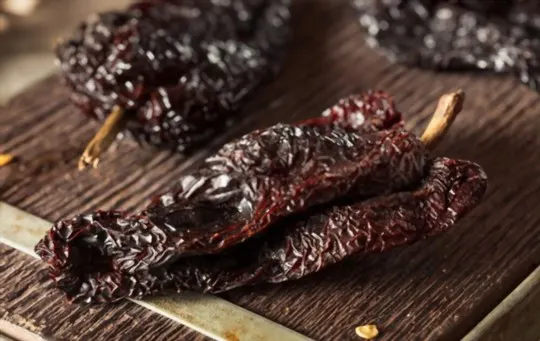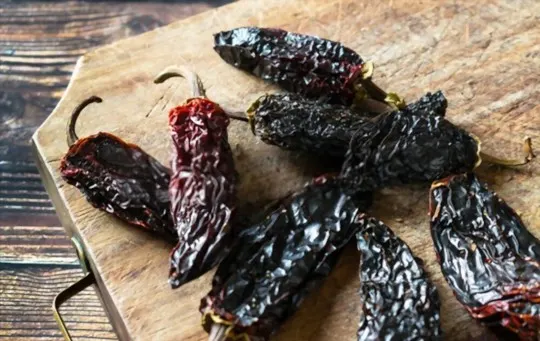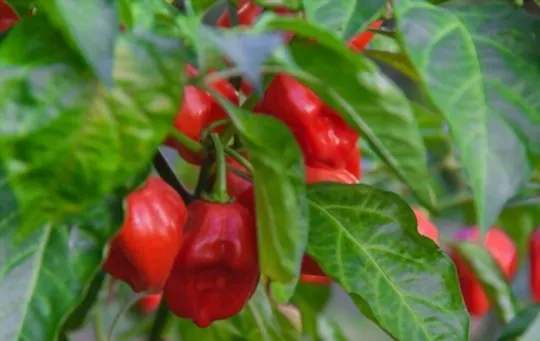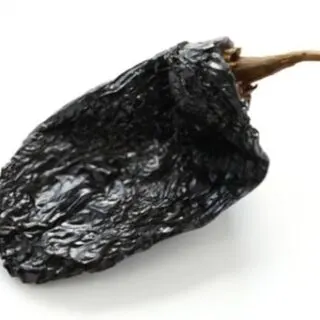Have you ever thought about cooking with Mulato chiles?
Native to Mexico, Mulato chiles are a delicious staple for many Latin dishes.
But cooking and using them in your kitchen can be a complicated task.
If you are looking for tips on how to cook with Mulato Chiles or substitutes for that same flavor, this article provides everything you need to know.
First, learn the basics of how to cook and use these chiles, from adding a smoky flavor to traditional dishes like tacos or finding suitable replacements.
Then, discover the best five substitutes that bring out the same great flavors without having to sacrifice cost or availability.
What is Mulato Chili?

Mulato chiles, a common ingredient in Mexican cooking, are dried poblano peppers that contain sweet and smoky flavors.
They grow during the fall season and are harvested when they are dark brown in color.
When dried, Mulato chiles soften and become pliable, which makes them easy to work with in dishes.
The taste of these peppers balances a hint of molasses sweetness with an underlying heat that you may not expect due to their mild appearance.
When lightly toasted or rehydrated before adding to dishes like sauces, stuffed peppers, pozole, and tamales, they impart a full flavor.
To preserve as much of the flavor as possible, it is best not to seed or devein the chiles before use.
Those looking for an interesting spin on homemade mole sauce or chili con carne should definitely give Mulato chiles a try.
The 5 Best Substitutes for Mulato Chiles in Recipes
If you’re looking for a spicy alternative to Mulato Chiles in your recipes, you’ve come to the right place.
This guide will help you find the best substitutes that can be used in their place and provide great flavor without sacrificing heat or texture.
1 – Ancho Chiles

Ancho Chiles are dried, dark green to red Poblano peppers with a unique, subtly sweet flavor.
Often called an ‘ancho pasillas,’ this pepper produces a mild heat that carries on the tongue.
Ancho Chiles are often used to prepare Mexican dishes such as chili, tamales, and mole poblano.
To unleash the flavors of these chiles, toast them prior to using them in dishes.
After toasting, the pepper can be rehydrated in boiling water for 20 minutes or until pliable.
If Ancho isn’t available in your community grocery store, then the Mulato chile is a suitable substitute; this pepper is less hot than its cousin but complicates dishes with chocolate overtones instead of sweetness like the Ancho provides.
2 – Guajillo Chiles

Guajillo chiles are a popular ingredient in Mexican cuisine, and for a good reason.
These long, reddish-brown peppers provide mild to medium heat, as they offer very little burn compared to other varieties.
Guajillos can range from sweet to smoky in flavor, depending on the region where they’re grown.
When dried, their thin skin becomes brittle, making them easy to pulverize into a powder or paste that brings out the heat of more piquant variations.
A true delicacy of authentic Mexican cooking is found by slow roasting these peppers; this process not only infuses their smokey aroma but also enhances their earthy flavor.
When substituting Guajillos for Mulato chiles, simply double the number called for in the recipe – Guajillos tend to be much milder than Mulatos despite being similar in size and shape.
3 – Pasilla Chiles

Pasilla chiles offer a deep, rich flavor to a variety of dishes.
These moderately-hot Mexican peppers—known as Chili Negro in their native country—are dark brown, slightly pointed at the bottom, and often sold dried.
Their thin flesh has an earthy umami quality with a hint of dark chocolate and raisins that help bring out big flavors while enhancing dulcet notes in spices.
Pasillas are an excellent substitute for Mulato chiles if your recipe calls for something more robust than sweet Ancho chiles.
To cook with Pasillas, you can either toast them over an open flame until they turn rusty brown, then remove the stem, seeds, and veins before grinding or soaking in hot water to rehydrate them before using.
Use your creativity to discover new ways to work this flavorful pepper into some exciting meals.
4 – Chipotle Chiles

Chipotle chiles are a variety of jalapenos that have been smoked and dried, giving them an intense smoky flavor and deep red color.
Though they can be quite hot, chipotle chiles pack an amazing depth of flavor with a pleasant underlying sweetness.
As such, they make for great seasoning for many dishes.
You can typically find them in two forms: dried or packed in adobo sauce.
To prepare the dried form, you need to rehydrate them before use by soaking them in hot liquid.
When substituting for mulato chiles, chipotles provide a good alternative due to their similar but less pungent flavor profile.
For best results, use one part Chipotle to two parts Mulato while adding other seasonings to balance out the heat.
5 – Habanero Chiles

Habanero chiles are a type of very hot pepper, making them the spiciest of all the chili pepper varieties.
When it comes to Scoville Heat Units (SHUs), it usually ranges between 100,000 to 350,000 SHUs, and they measure in at 5-8 times hotter than your average jalapeno.
The Habanero chile has a bright orange hue that comes from carotene and Vitamin C, as well as capsaicin — a chemical component found in peppers that give them their spice.
Habanero chiles have thin flesh with an intense heat that will certainly make you sweat.
When cooking for someone who would prefer something less spicy, the Mulato chile is a good substitute—it’s milder than the Habanero but still has pungent flavor notes without overwhelming heat.
If you’re cooking with habaneros, remember to wear gloves and be cautious not to rub your eyes – both will cause irritation if you make direct contact.
Conclusion
In conclusion, when substituting for the mild-medium Mulato chile, there are a variety of options to choose from.
The Ancho chile is sweet and smoky, while the Guajillo has a mild heat with earthy notes.
Pasilla chiles offer a deep and robust flavor, Chipotle provides an intense smoky flavor with an underlying sweetness, and Habanero offers a bright orange hue with intense heat.
While each of these peppers provides their own unique flavors, the Mulato chile is still the best for adding subtle notes to dishes without overpowering them.

The 5 Best Substitutes for Mulato Chiles in Recipes
Ingredients
- Ancho Chiles
- Guajillo Chiles
- Pasilla Chiles
- Chipotle Chiles
- Habanero Chiles
Instructions
- Choose your preferred substitute from the list of options.
- Organize all of your ingredients.
- Use the proper substitute to cook your recipes.
